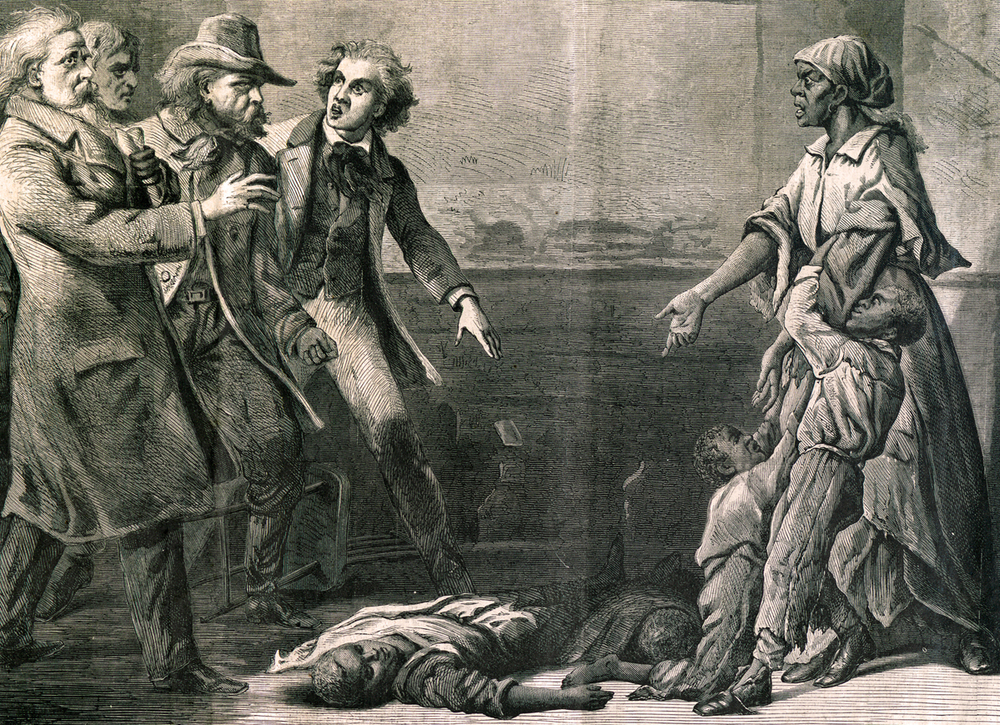The Tragic Story of Margaret Garner
An enslaved Black woman and her family's fight short-lived fight to freedom in Cincinnati.

In an effort to escape slavery in the South, Margaret Garner and her family journeyed from Richwood, KY to Cincinnati, OH where they were quickly recaptured, but not before Margaret took matters into her own hands...
Background
Talk about a story that really puts into words how inhumane slavery was in our country’s history. In 1856, six years after the Fugitive Slave Act was enacted, a pregnant Margaret Garner, her husband (Robert), children (Thomas, Mary, Samuel, and Cilla), and others ran from a plantation in Richwood, Kentucky. The men who claimed ownership of those escaping slavery (re)captured them when in Cincinnati. In a morbidly drastic effort to keep her children out of slavery, Margaret murdered her two year old child and tried to kill her other children because she knew that if enslaved, they would be forced to endure terrible horrors that no human should ever experience. The story of Margaret Garner and her family was so tragic that in modern years, it was the inspiration behind Toni Morisson’s book, Beloved, and a subsequent Oprah movie. Margaret’s life, though short, is one that allows us to reflect back on just how dehumanizing slavery was. It is through her journey, that we can better understand America’s history of slavery. Though it may seem unconscionable, killing her children was her way of giving them the freedom they deserved. Her desperate actions were not unique in that there are many stories of captured Africans aboard slave ships throwing their babies into the sea or committing suicide by jumping over board themselves.
Journey to 'Freedom' in the North
The story begins in 1856, when Margaret Garner (b. 1834 – d. 1858) her husband, four children between the ages of nine months-to-six years old, and in-laws, fled the Marshall Plantation in Richwood, Kentucky in an effort to escape slavery. After seeking safe harbor at a Presbeteryan church and making it 20 miles to Covington, Kentucky, they ditched their horses and crossed a very frozen Ohio River on foot. It took 28 hours of travel from Richwood to get to Margaret’s free cousin’s house, Elijah Kite, on Sixth and Mill streets in Cincinnati (now the site of the Mill Creek Wastewater Treatment Plant on Gest Street). However, because they had to make a few inquiries to find Kite’s home, their location was unsafe. Kite met with Underground Railroad conductor and abolitionist, Levi Coffin at his business at Sixth and Elm streets who instructed him on how to get them to a safer location.
Within the time it took for Kite to return to his home, officers and a posse from the Marshall Plantation surrounded Kite’s residence. There was no time to flee. Moreover, because the 1850 Fugitive Slave Act gave slaveowners legal rights to recapture runaway slaves, they were able to quickly get a warrent issued for the arrest of the Garners.
Margaret's Act of Humane Homicide
In an effort to protect his family, Robert immediately grabbed a pistol and fired and hit the deputy. Once Margaret realized that capture was inevitable and that their hopes of freedom were coming to an end, “she seized a butcher knife that lay on the table, and with one stroke cut the throat of her little daughter, whom she probably loved the best”. Then, she tried to kill her other children and herself but was arrested before she was able to complete her desperate plans. In his memoirs, Coffin recalls that, of all the enslaved people he has helped over the years, no story was as tragic as Margaret Garner. He explicitly says that,
“Perhaps no case that came under my notice, while engaged in aiding fugitive slaves, attracted more attention and aroused deeper interest and sympathy than the case of Margaret Garner, the slave mother, who killed her child rather than see it taken back to slavery”.
On January 30, 1856, the case against the Garners began to take shape. Represented by John Jolliffe, a prominent Cincinnati abolitionist lawyer, their defense argued that because they had been freely brought into Cincinnati by their owners on previous occasions, they were now entitled to live freely in Ohio (a free state). Ultimately, this argument didn’t satisfy the courts and on February 7, Margaret and the other Garner adults were indicted by a grand jury for Mary’s murder. The ruling of the trial resulted in sentencing all the Garners to be taken back to their respective owners.
Looking back at Margaret’s story, her decisions started to make sense. Yes, she killed her child, but as an enslaved woman, what other choice did she have? She knew what would happen if she let her family be recaptured. Yes, her story was tragic, but there are important historical lessons to be learned from Margaret Garner’s experiences.
Images
